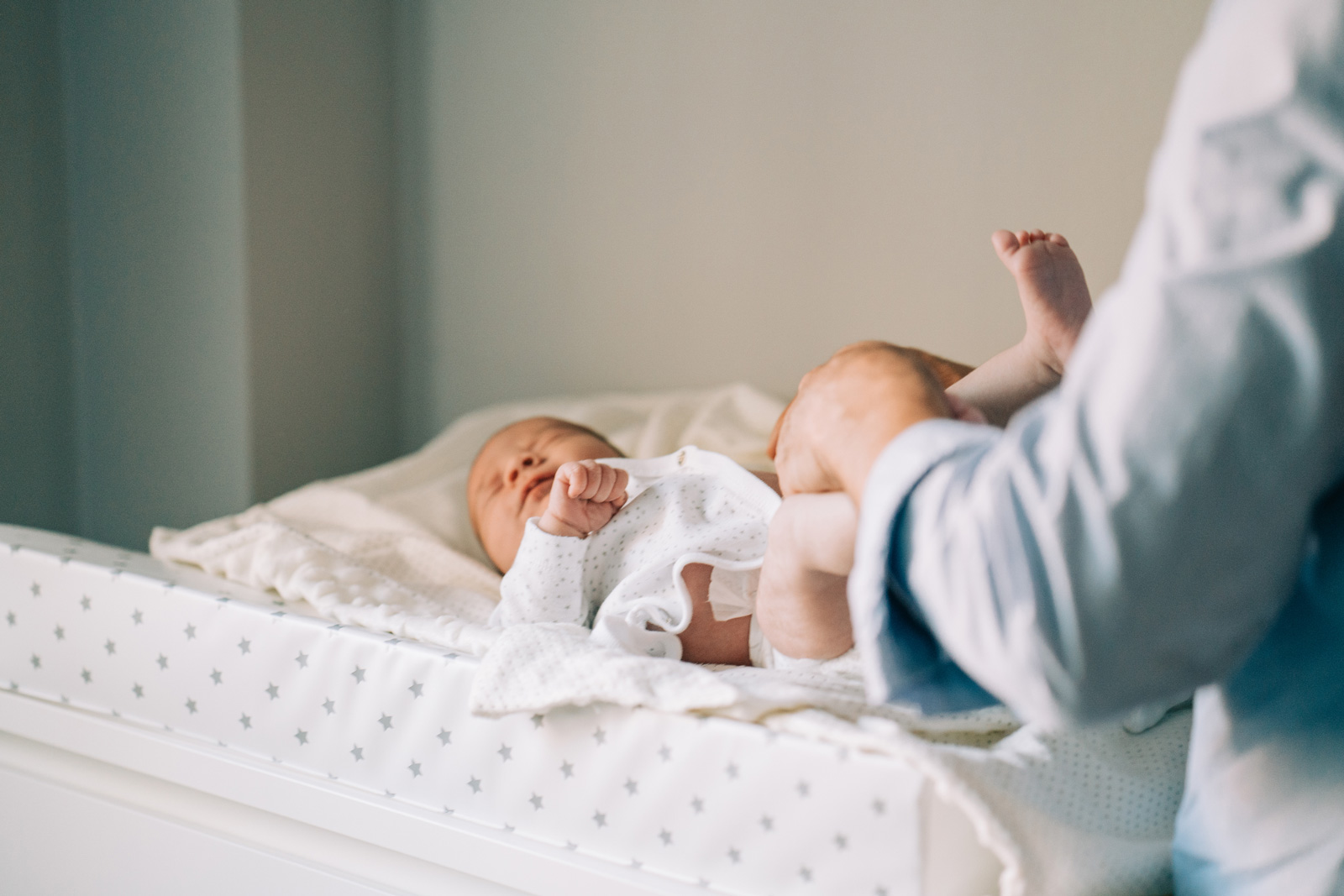Among all the precious giggles and squishable cheeks that come with having a baby, we doubt changing diapers is part of your parenting highlight reel. However, finding the perfect diaper fit is crucial to helping your baby stay happy and clean. Once they’re in the right diaper, leaks and explosions can remain at bay.
Is Your Baby’s Diaper the Right Size?
Babies are constantly growing; it can be hard to keep up with their ever-evolving diaper sizes. So, how do you know if your baby’s diaper fits? The best way to determine what kind of diaper to buy is by looking at a size chart.
Most of the time, the baby’s weight will fall within the range of a certain diaper size, so it will be easy to find a good fit. After you’ve weighed your baby and checked the size chart, examine how it looks and feels on them.
An infant diaper’s waistband should sit right under your baby’s belly button. If the diaper is a perfect fit, the leg cuffs won’t have any gaps. You should be able to fit two fingers under the waistband, so it’s not too snug.
As long as you’re paying attention to how your baby’s diaper fits, you should trust your parental instincts; don’t let anyone else make those decisions for you.
When to Change Diaper Sizes
Changing diapers probably isn’t your favorite part of parenting, even without the hassle of leaks and overflows. Keep diaper mishaps at bay by knowing when it’s time to go up or down a size.
If an infant diaper is too big, the fastening tapes will overlap. You will also notice more leakage with an oversized diaper. However, it’s more common for babies to be outgrowing diapers than swimming in them.
When your baby is too big for their diaper, the fastening tapes won’t reach the center of the waistband. Red marks on your baby’s stomach or thighs upon removing the diaper is another sign you need to go up a size. The material should cover your baby’s entire bottom; if it doesn’t, size up.
Another tell-tale sign of small diapers is regular diaper rash. When the material can’t hold moisture away from the skin, it can get irritated more easily. Your baby may also try to communicate that their diaper is too small by pulling at it or showing signs of discomfort when wearing it.
The Best Diaper for Each Age
From the time your baby enters the world to when they’re finally entering the potty-training stage, they’ll need a diaper to support them.
You’ll need different kinds of diapers for:
- newborns
- growing babies
- moving babies and toddlers
Infant Diapers for Newborns
The most important thing to keep in mind about your newborn baby is their soft, delicate skin. So, choose an infant diaper that will be smooth and absorbent to keep them dry. Also, make sure that your infant diaper doesn’t rub against the umbilical cord stump.
All babies will typically start in a newborn diaper size, which fits infants up to ten pounds. If your baby is premature and under six pounds, they might need “preemie” diapers. As they start to get bigger, you’ll transition into infant diaper sizes one through six.
The Right Diaper Size for Growing Babies
When your baby starts crawling and exploring, keeping them dry will be your primary concern. You need to find a diaper that’s absorbent when your baby is six to twelve months old. During this time, they’ll likely be transitioning through sizes two and three, depending on their weight and length.
This stage of rapid growth is when it becomes imperative to find the right diaper size. As babies’ diapers become messier, they’ll need more leak prevention. Luckily, as their size increases, diapers will have more absorbent materials.
If you want your baby to sport an adorable design as they scoot around the house, check out the Hello Bello diaper subscription. They have tons of unique patterns to choose from, plus you’ll never have to worry about running out to the store to grab diapers.
Diapers for Moving Babies and Toddlers
Before you know it, your precious newborn will be at the one-year mark. When they’re constantly wiggling, moving, and even beginning to walk, their diaper needs to keep up. Since getting them to sit still can be nearly impossible, try to find a diaper that will be easy to remove and put on quickly.
Most children will remain in diapers until they’re about two or three years old, although the process of potty training is different for each kiddo. At this stage, your toddler is constantly on the go between play dates and daycare. So, if they are still in diapers, look for ones with strong tabs and plenty of stretch, like the Pampers baby dry.
As your baby grows, remember to always keep an eye on their diaper and how it’s fitting. Pro parenting tip: stock up on extra sizes just in case your baby grows overnight.

